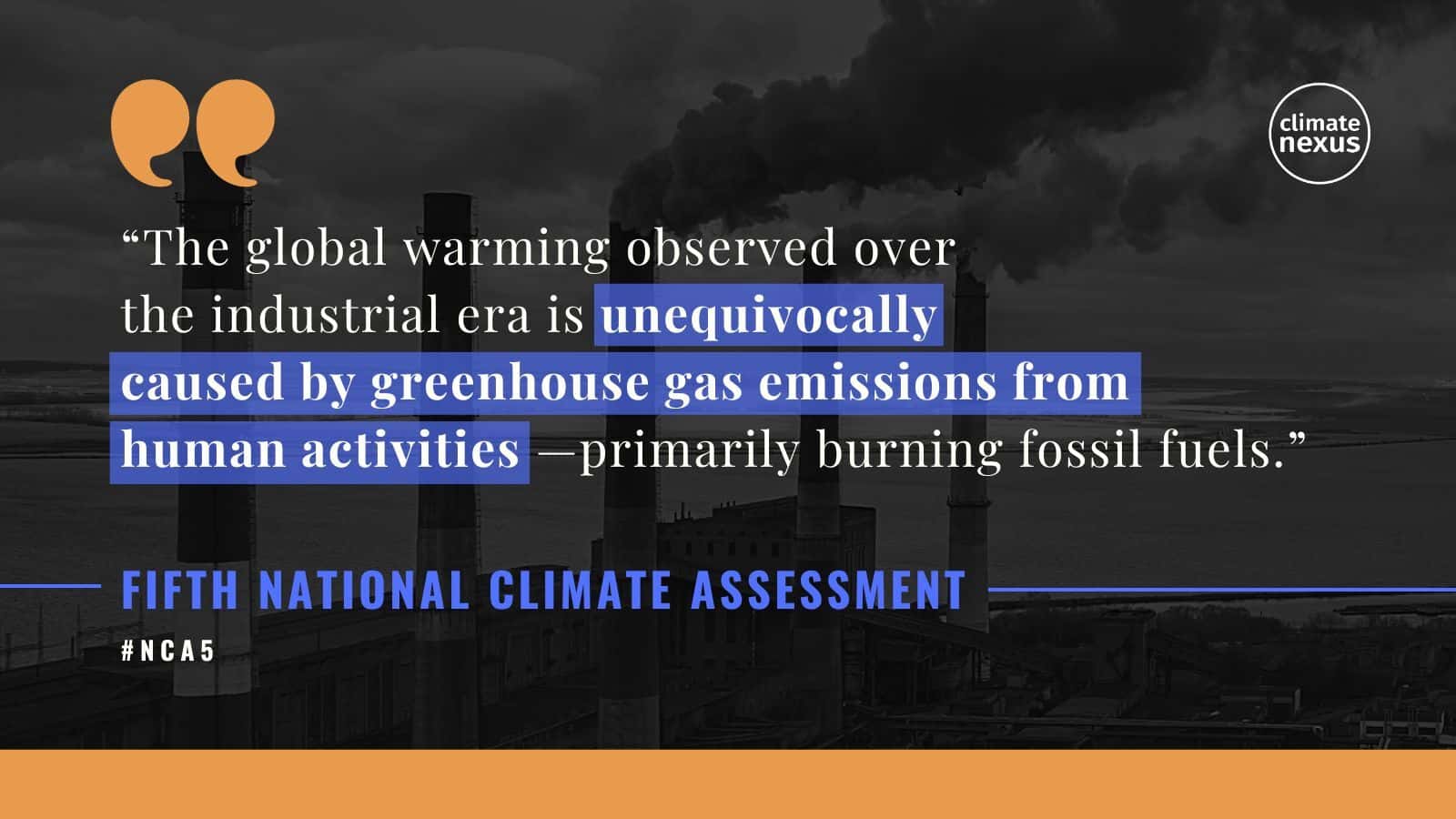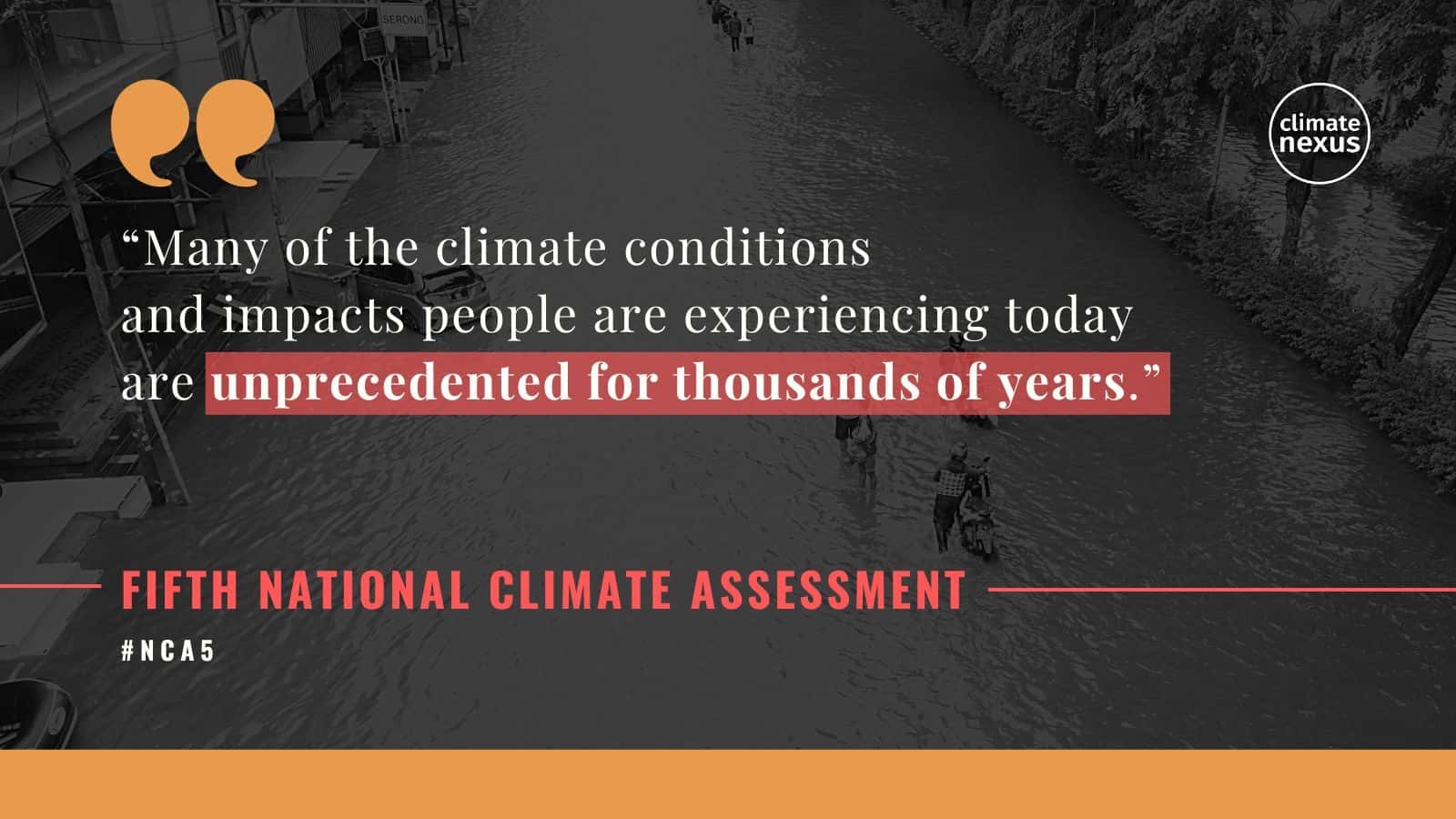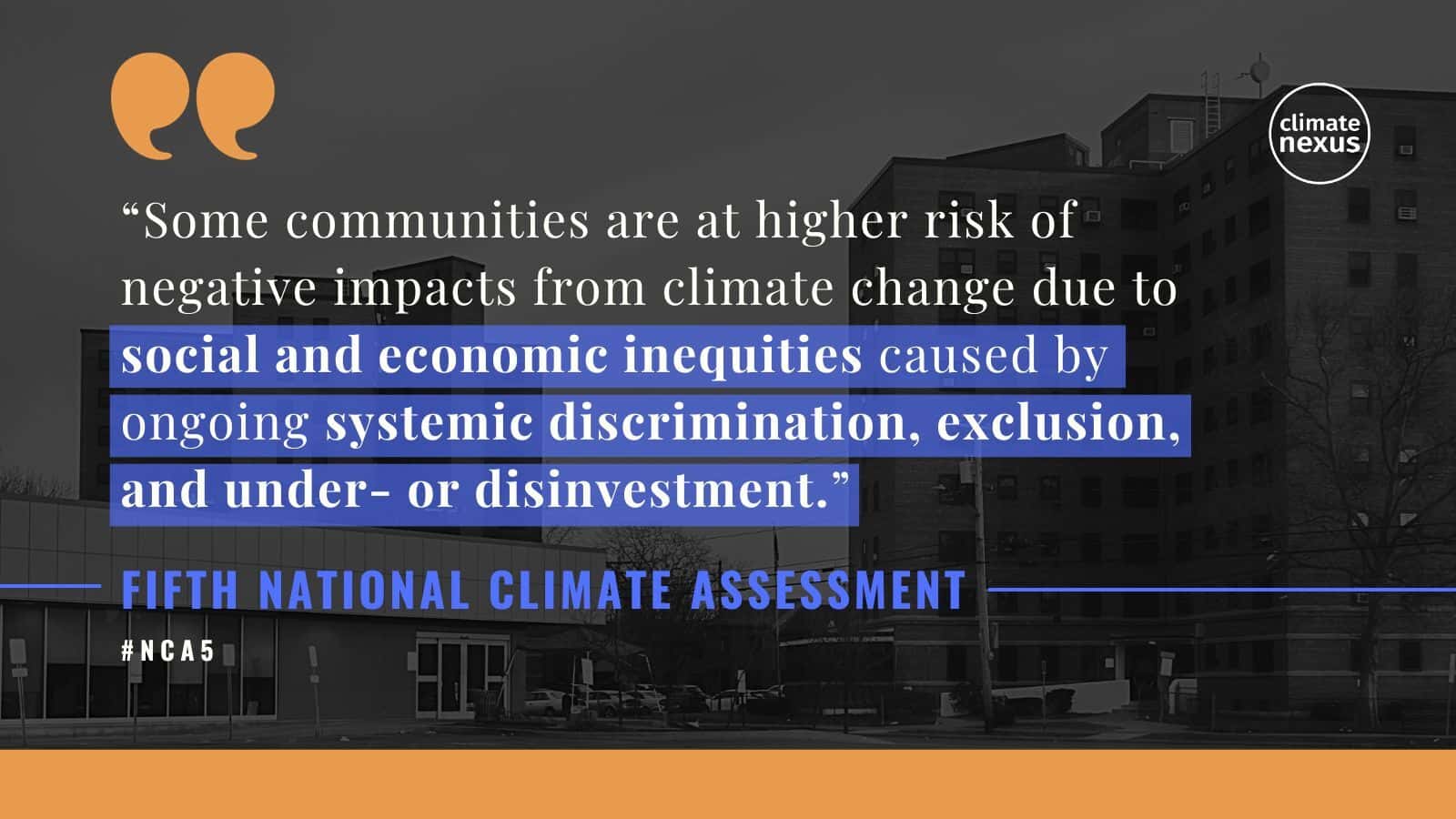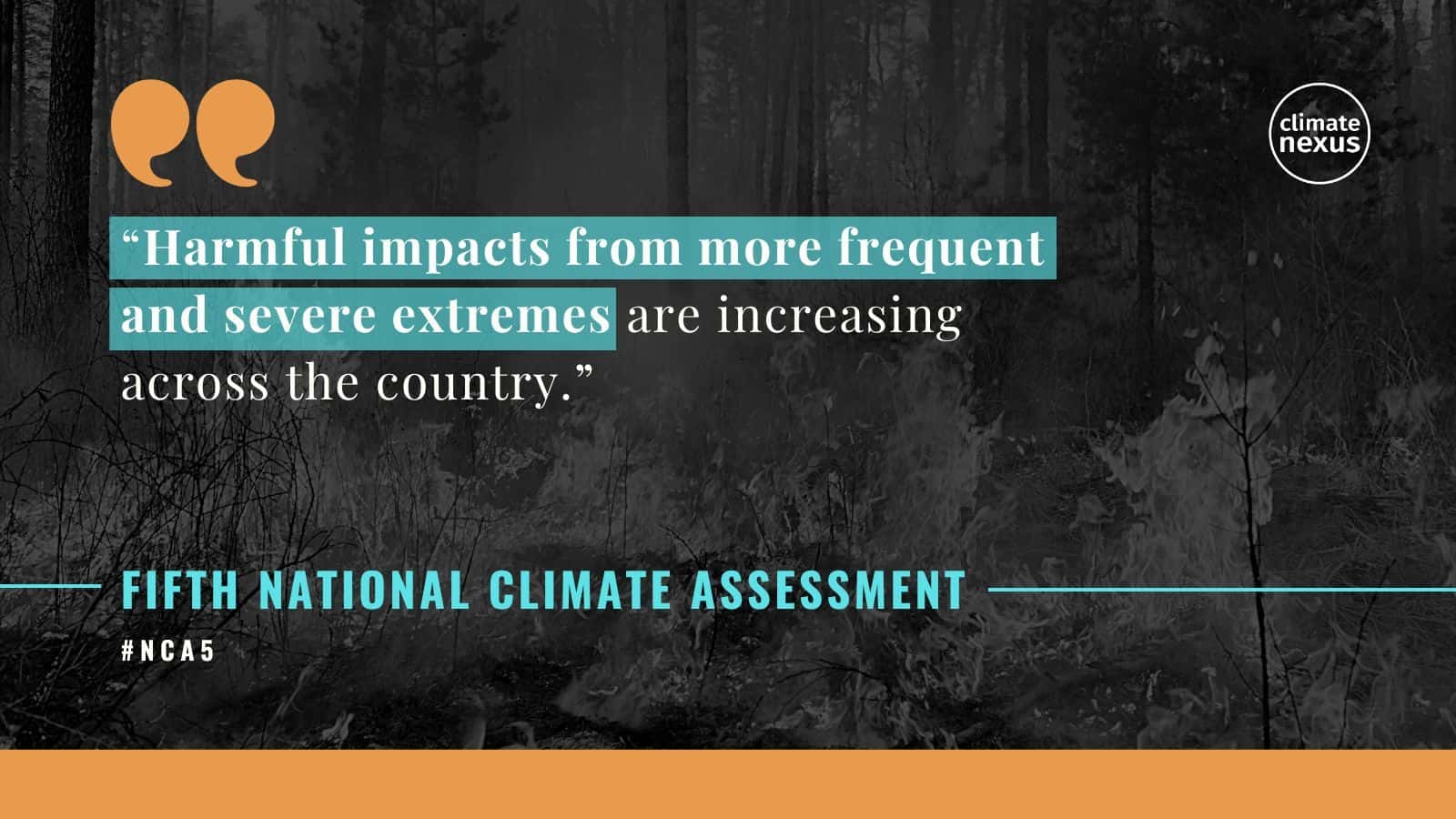If you’ve been paying attention to news headlines over the last 24-48 hours, you probably came across news articles like this one from CCN stating “No place in the US is safe from the climate crisis, but a new report shows where it’s most severe.”
What is this new report and what makes it so significant? How is it any different from or similar to your everyday rather bleak climate crisis update, for that matter?
In mid-November, the U.S. Global Change Research Program (USGCRP) released the Fifth National Climate Assessment report. This detailed report is considered the “gold standard” assessment of the effects of climate change on the United States – its people, environment, and economy, based on the latest science.
Luckily, you don’t have to read the full report to get the gist as we’ve broken down the key points and takeaways for you.

THE SCIENCE IS CLEAR – HUMAN ACTIVITIES ARE WARMING THE GLOBE
- Human activities—primarily emissions of greenhouse gasses from fossil fuel use—have unequivocally caused the global warming observed over the industrial era.

THE CONSEQUENCES OF INACTION ON CLIMATE CHANGE ARE INCREASING
- More expensive disasters: In the 1980s, the country experienced on average one (inflation-adjusted) billion-dollar disaster every four months. Now, there is one every three weeks on average.
- Harmful impacts from more frequent and severe extremes are increasing across the country—including increasing heat-related illnesses and death, costlier storm damages, longer droughts that reduce agricultural productivity and strain water systems, and larger, more severe wildfires that threaten homes and degrade air quality.

CLIMATE CHANGE EXACERBATES INEQUITIES
- Climate impacts—combined with other stressors—are leading to ripple effects across sectors and regions that multiply harms, with disproportionate effects on underserved and overburdened communities.
- Climate change worsens these long-standing inequities, contributing to persistent disparities in the resources needed to prepare for, respond to, and recover from climate impacts.

CLIMATE CHANGE THREATENS SAFE, RELIABLE DRINKING WATER SUPPLIES
- Aging infrastructure wasn’t designed for the climate extremes we experience today. Disinvestment and deferred maintenance has left U.S. water systems ill-equipped to handle increased climate risks from heavy rain, flooding, and drought.
- Saltwater intrusion into rivers and aquifers threatens the drinking water supply for coastal communities.
For a deeper dive into the contents of the report we, in conjunction with Climate Signals & The Water Hub, have produced subject matter toplines that cover: Climate Science, Economic Impact, Health & Air Quality, and Water Resources. You can find them linked below:
We must not lose hope – there are things we can do, and must do, as a society to limit warming. If greenhouse gas emissions do not fall rapidly, the risks of extreme weather, compound events, and other climate impacts will continue to grow. How much more the world warms depends on the choices societies make today. The future is in human hands.



